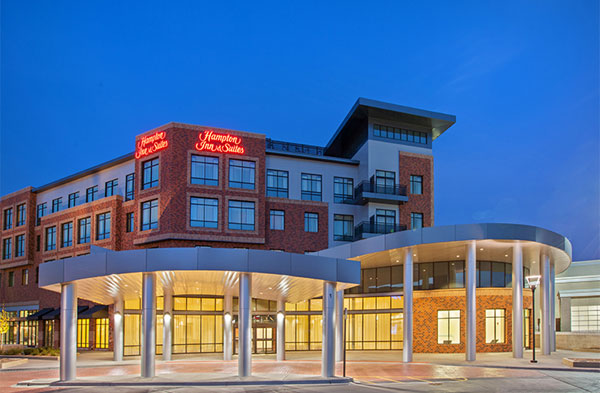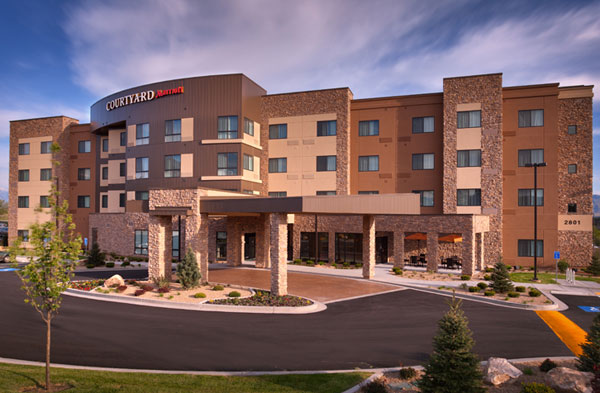✕

Column: industry Tag: MCR Development,portfolio sale,acquisition Published: 2017-11-22 15:05 Source: Author:

MCR Development’s latest acquisition is the 120-room Hampton Inn & Suites by Hilton in Mount Prospect, Illinois. Company executives said MCR is aggressively seeking to buy more hotels. (Photo: MCR)
PHOENIX—On the heels of selling 18 hotels in a single transaction in June, MCR Development is looking to aggressively add to the 65 properties the company currently has in its portfolio.
The company plans to acquire between five and 10 hotels each quarter—most of the deals will involve one or two hotels, said Joe Delli Santi, MCR’s VP of acquisitions and development, during a break at the recent Lodging Conference.
“Over the next 18 to 24 months we’ll buy 40 to 45 hotels,” Delli Santi said. “We’re agnostic to markets. We’re opportunistic. … We’ve looked at some portfolios, but we think the opportunity is more in individual hotels.”

Joe Delli Santi,
MCR Development
MCR will underwrite the hotels for three-, five- or seven-year holds and the company buys them at cap rates of 8.5% or 9%, the executives said. About half of the hotels will need “medium renovations,” and the other half will require no property improvement plans at all.
“We’ll buy or sell before or after the PIP,” said Russ Shattan, SVP of acquisitions and development. “Our investments are not timing-based or cycle-based. We base acquisitions on being able to improve the performance of the hotel through operations, rate management, renovations or other ways. A lot of the value-add we bring for operations is not timing-influenced.”
In June, the company sold 18 Marriott and Hilton assets to American Hotel Income Properties REIT for $407.4 million. The average capitalization rate of the portfolio disposition was approximately 7.9% on a trailing 12 months net operating income basis, the company said in a news release. The MCR executives said the sale fit well within their strategy of acquiring, improving, holding and then opportunistically selling hotels.
According to news releases posted on its website, in 2017 MCR has bought three hotels, sold 19, opened one and completed 11 renovations. The company began its buying plan in October when it acquired two hotels—a 3-year-old Courtyard by Marriott and an 8-year-old SpringHill Suites by Marriott—in Lehi, Utah, from Sunridge Hotel Group for $27.5 million. The region is also called the Silicon Slopes because of all the technology businesses located in the area.
No capital expenditure is needed for the hotels, Shattan said.
In October, MCR acquired a 120-room, 50-year-old Hampton Inn & Suites by Hilton in Mount Prospect, Illinois.

Russ Shattan,
MCR Development
“Those types of hotels—it’s 100% what we want to do,” Shattan said, noting that the Hampton is 5 years old and the hotels in Utah are 6 and 3 years old. “They aren’t downtown, but they’re not tertiary. There are 7,000 of these properties in the country. At any one time there’s 100 of them on the market. … In a lot of markets, there’s a lot of construction, so we try to mitigate that by buying the best brands.”
MCR puts a lot of emphasis on revenue-managing and pricing strategies after acquiring a hotel, Shattan said.
“The deal is won and lost on the top line,” Shattan said. “To sell every room every night … that’s the challenge, but that’s the goal.”
“It’s not about rate, it’s about (revenue per available room),” Delli Santi said.
The lack of significant loyalty-point redemption is a key driver in acquiring that type of hotel because it allows MCR to focus on driving revenue, Shattan said.
“The beauty of business travelers is OPM—other people’s money,” Shattan said. “That’s the reason we can drive rate in business hotels.”
The company has 65 hotels in its portfolio. Most of those properties are less than 10 years old and fall in the $90 RevPAR vicinity, Shattan said.
Delli Santi said the company likes to move fast on acquisitions—the timeline typically involves 30 days for due diligence and 30 days to close.
Shattan said MCR has a discretionary fund that allows it to quickly access capital for transactions instead of having to raise money for each deal as many of its competitors do.
“We have a fund that the money is available now, so we can move on deals quickly,” Shattan said.
For example, the acquisition of the two hotels in Lehi involved 15 days for due diligence, Delli Santi said.

The Courtyard by Marriott in Lehi, Utah, was one of two hotels that MCR Development acquired after completing the due diligence process in 15 days. (Photo: MCR)
“The beauty of these types of hotels is you can underwrite them easily,” Shattan said.
While the company can put at least 30% to 40% of the deal price in cash, “we can close all cash then finance it later,” Delli Santi said.
The hotels MCR typically acquires are owner-operator structures that allow the company to move quickly on assuming the management of the property through its operations team based in Dallas, according to Shattan.
“In that 15-day example, we were transitioning that hotel’s management as the ink was drying,” he said. “Our goal is to keep all of the employees when we acquire a hotel, and getting in ASAP allows us to assess the situation. As we bring our approach to managing a hotel a little differently, we train the staff to think in our style. In this market, it’s very hard to find good people, so keeping existing employees often is the best road to our success.”
The current acquisition window remains open in large part because the financing market “is on fire,” according to Delli Santi.
“We work with a lot with local lenders,” he said. “We’re doing straight balance-sheet type loans and these lenders know the assets. It’s a simple process. (Financing costs LIBOR) plus 225 (basis points) to 250 (basis points) on these type of assets.”
Previous:STR: US hotel results for week ending 18 November
Next:Independent hoteliers weigh in on hotel industry shifts
Hot key words
Hot Products
Popular Vendors